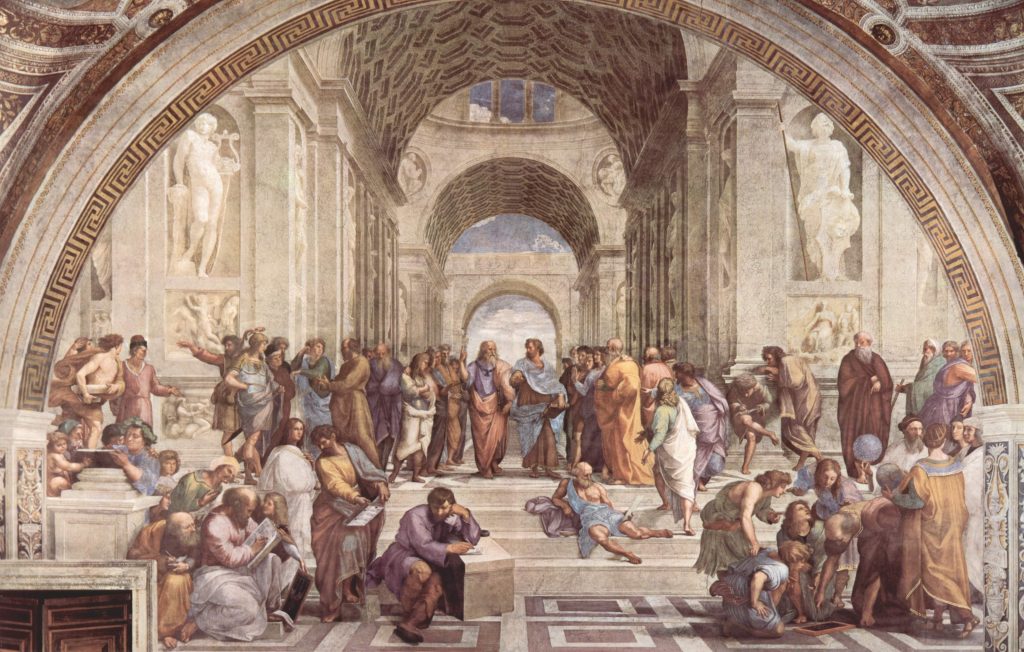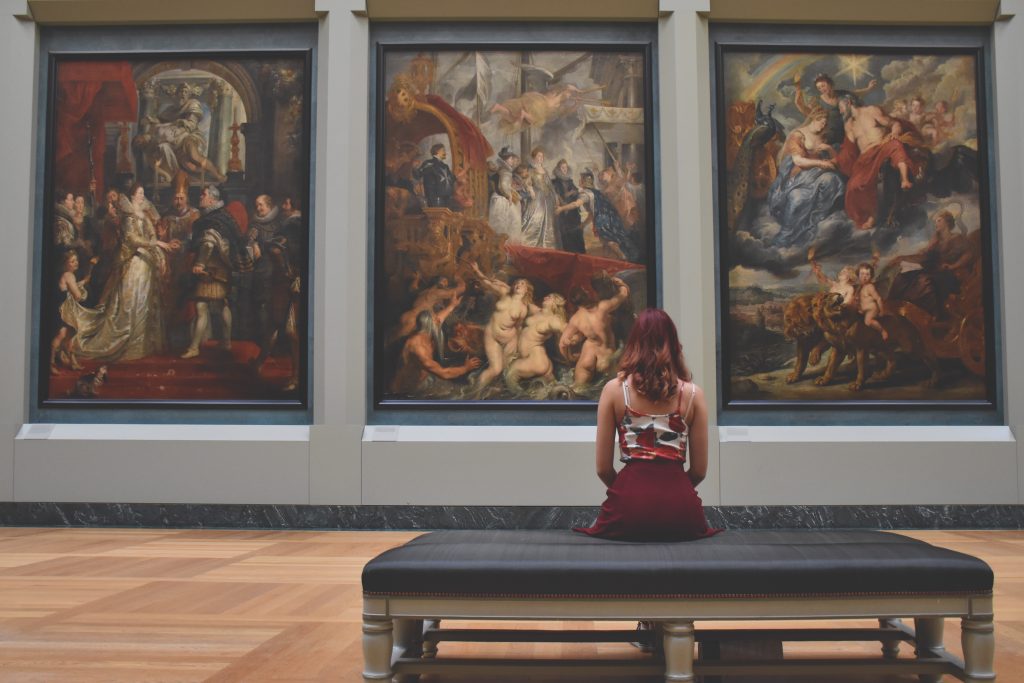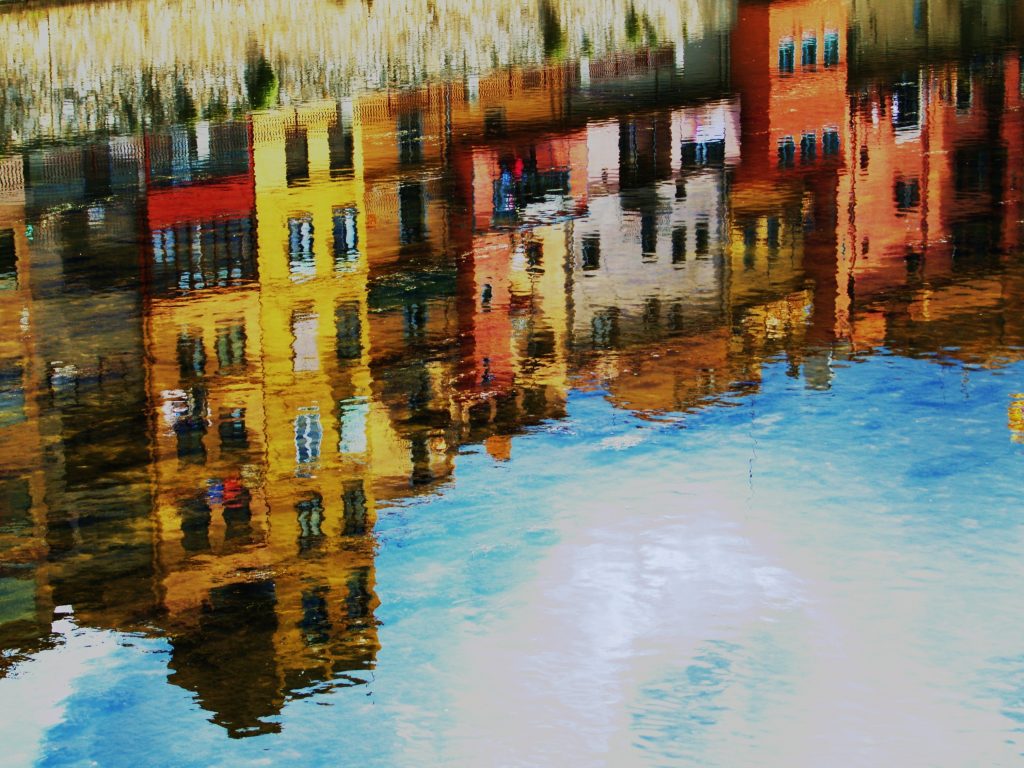When it comes to HSC Visual Arts there’s lots of ways to practice and prepare for your exams, but writing an essay for it can be difficult — if only there was a scaffold you could use to make things easier…
Even if you know you want to memorise an essay, or just go in with key points, knowing how to actually write your response is the most important factor.
Fortunately we’ve come up with this awesome article that lets you know exactly how to use a Visual Arts essay scaffold to write a strong essay!
So follow along, figure it out and then give it a go and you’ll be on your way to a Band 6 in no time!
What Is Scaffolding?
Introduction
Body Paragraph 1a
Body Paragraph 2a
Body Paragraph 1b
Body Paragraph 2b
Conclusion
What Is Scaffolding in the HSC Visual Arts Essay?
Scaffolding basically involves laying out the individual elements of an essay one by one so that you can see exactly what you need to include.
Throughout high school you probably filled out a scaffold or two for different class tasks and assignments.
Essentially they work by making you aware of exactly what you need to be including in any given response and how to make sure you create the best essay possible.
For the purpose of our scaffold, we’ll be going through and breaking down each paragraph of a Visual Arts extended response/essay. We’ll identify the individual points or ideas you need to include, as well as the best ways to work them into your response.
That way you’ll be bale to go into any art essay knowing exactly what you need to write.
We’ve included example sentences for our introduction and conclusion, as well as one body paragraph to show you exactly what kind of things you should and could be writing.
Introduction of the HSC Visual Art Essay
Step 1: Thesis sentence responding to the question
This should be concise and to the point, as you want your thesis to be super clear to whoever is reading your essay. Make sure that whatever you’re saying is answering/responding to the question being asked and try to avoid overly long or complex theses.
Example
Question: Art is about reflecting reality.
Thesis sentence: “While art may reflect reality, it also acts as an expression of imagination.”
Step 2: Context about artists and artworks
First of all you’ll have to introduce each of your artists and at least two of their artworks, as you’ll be analysing these in your essay. You may then want to add some brief context – even if it’s just one or two descriptors, such as mentioning that one artist is Australian, or that both are women. Whatever context you do mention should be relevant to or play a role in your thesis or main ideas.
Example
“Del Kathryn Barton is one such artist, who uses symbolism and decorative patterns to convey concepts of femininity and imagination in her works That’s when I was another tree 2 and She appeared as a lover might. On the other hand artists such as Barbara Kruger, who uses boldly coloured text in her works Untitled (Pro-life for the unborn/Pro-death for the born) and Untitled (Your body is a battleground), show how reflecting reality can be pivotal to an artwork.”
Step 3: Signpost the main ideas of the essay
Signposting is the art of telling the reader what you’re going to talk about without actually starting to talk about it. This means you’ll want to briefly name or mention the key ideas or arguments you’ll focus on in your essay, but don’t go into any detail yet! That’s for your body paragraphs.
Example
“These two artists despite their differences in style and subject matter both show a respect for that which is real and imagined in their artworks and practice. Hence they reveal through their works that art may reflect reality, but it expresses imagination as well.”
Body Paragraph 1a
Step 1: Introduce the first idea you signposted
It’s time to start detailing your main ideas or arguments from your introduction. You want to use your strongest idea first, so pick the one you know the best or can argue the best and explain it here in a little more detail. Make sure your sentence also makes it clear how this idea links to your thesis and/or the question.
Example
“That’s when I was another tree 2 is one of Barton’s works that uses visual language to express the abstract concept of femininity, using line and symbolism to express an imaginative interpretation of the idea.”
Step 2: Introduce Artist 1 and the artwork you’re analysing
Bring in your first artist by giving some more context on them as is relevant to the idea you’re writing about. This may include their nationality, when they lived, their social background, etc. You’ve already named the artwork you plan to analyse for this paragraph so briefly describe it for the audience. You don’t need to get too in-depth in your descriptions, but make sure the reader knows enough for the rest of your paragraph to make sense.
Example
“Barton’s own role in society as a woman clearly influenced both her experiences of reality and her choice to create imaginative, expressive works about it. The image shows a nude girl holding a cat and looking upward, with ribbon wrapped around her arms and hair.”
Step 3: Analyse the artwork using the principles and elements of design, the frames and the conceptual framework
This is the trickier part – actually analysing. You need to make sure you know and understand the artwork and how it relates to or proves the ideas you’re trying to argue.
Analysing how the work interacts with the elements and principles of design, the frames and the conceptual framework is usually the best way to do this. Brush up on analysing the principles of design, the frames, and conceptual framework of art!
Example
“The use of thin, jagged line work in the outlines and details of the image create a sense of sharpness and fragility, reminiscent of the edges of broken glass. Meanwhile the inclusion of the ribbons tied to and around the naked figure acts as a symbol for being trapped; trapped by society, trapped by reality and trapped by the expectations of young women in modern times. The cat also acts as a symbol, often tied to the idea of female manipulation, however the dark pink of it paws contrasted with its white claws highlight the way it cuts into the girl’s hand, yet another symbol of physical entrapment.”
Step 4: Explain how Artist A reflects the idea
Usually most of these connections will be made in your analysis, but you need to really drive home the point you’re making about why this idea is relevant to your artist and vice versa. Do this with a simple sentence stating exactly how the two are linked.
Example
“In this work Barton uses imaginative imagery to create an image that expresses an idea without being rooted in reality, thus she is able to accurately and interpretively reveal the abstract idea of femininity.”
Step 5: Sum up the idea and link back to your thesis
You need to end your paragraph solidly, so make sure your concluding sentence brings your idea, analysis and thesis all together. Make sure to use high modality words like “proves”, “exemplifies”, etc.
Example
“Therefore Barton and her work That’s when I was another tree 2 act as evidence that while art may reflect reality, it is also an expression of imagination.”
Body Paragraph 2a
Step 1: Reiterate the first idea you signposted
Restate the idea from your last paragraph but this time focus on how it links to your second artist. You may want to throw in some simple comparative language as well to begin the contrasting between your two artists, such as “on the other hand”, “in contrast to”, etc.
Step 2: Introduce Artist 2 and the artwork you’re analysing
Do this in the same way as you did in paragraph 1a, making sure to point out any relevant context that may be relevant for your analysis. Also make sure to comment on any important similarities or differences between this artist/artwork and the first artist/artwork.
Step 3: Analyse the artwork using the principles and elements of design, the frames and the conceptual framework
Just as you did in paragraph 1a you now need to analyse the artwork. Remember you’re analysing comparatively, so comment on whether this artwork is similar or different to the first artwork you looked at, or if it has both different and similar elements.
Step 4: Compare and contrast Artist 1 with how Artist 2 reflects the idea
Really drive home your comparison here by stating how your idea is relevant to this new artist, then comparing and contrasting with how it was relevant to your first artist. This just makes sure you’re covering all bases and making sure your comparative analysis is on point.
Step 5: Sum up the idea and link back to your thesis
Do the same as what you did for paragraph 1a, just make sure to add in a little mention of your comparison. Sentence starters such as “Similar to Artist 1, Artist 2 has proven…” are a great way to do this.
Body Paragraph 1b
Step 1: Introduce the second idea you signposted
Even though your first idea was the stronger one, you want to make sure your second idea is argued and analysed just as well. Introduce the idea in more detail just like you did before, making sure to mention how it connects to your thesis of your HSC Visual Arts Essay.
Step 2: Reintroduce Artist 1 and the artwork you’re analysing
Add any extra context we may need for this artist and then get into naming and describing the new artwork you’re analysing. You have less to write here this time around so don’t worry if you feel you’ve written a little less.
Step 3: Analyse the artwork using the principles and elements of design, the frames and the conceptual framework
Do this just as you did for paragraph 1a, focusing on the elements and principles of design, the frames and the conceptual framework. Try to avoid analysing all the artworks in the same way, so if you focused on colour symbolism last time, try analysing the use of line or the materials used this time round.
Step 4: Explain how Artist 1 reflects the idea
Again, this is just as you did it in paragraph 1a. One thing you can add would be a comment on how the different or similar ways in which the artist reflects each of the ideas you’ve presented. For example maybe their exploration of your first idea was very obvious, whereas the second was more subtle.
Step 5: Sum up the idea and link back to your thesis
This is the same as you did the first time – make it punchy and powerful and you’re good to go.
Body Paragraph 2b
Step 1: Reiterate the second idea you signposted
Take the idea from paragraph 2a and restate it focusing on your second artist/artwork, including some comparative language for extra punch.
Step 2: Reintroduce Artist 2 and the artwork you’re analysing
Do this just like you did in paragraph 1b – you’ll totally have the hang of this by now.
Step 3: Analyse the artwork using the principles and elements of design, the frames and the conceptual framework
At this point you’ll be an analysis whiz, so keep it up like you did in paragraph 1b by analysing and comparing at the same time for the best effect.
Step 4: Compare and contrast Artist 2 with how Artist 1 reflects the idea
Smash that comparative analysis out of the park with some final summary on how the two artists/artworks relate in regards to the idea you’re looking at.
Step 5: Sum up the idea and link back to your thesis
This is your last body paragraph so sum it up superbly and you’re almost at the finish line. Make sure to really drive home your idea and how it links to your thesis as well, just to make sure your essay is super cohesive and clear.
Conclusion for the HSC Visual Arts Essay
Step 1: Summarise and restate your thesis responding to the question
Your conclusion is just reminding readers of what they’ve read, so create a punchy sentence that reminds them what your thesis was and how it was responding to the question posed.
Example
“While art may reflect reality, the fact of the matter is that it also acts as an expression of imagination, as proven in the works of Barton and Kruger.”
Step 2: Sum up the ideas you originally signposted
Grab those ideas you signposted in the beginning and sum them up succinctly in 1-2 sentences, making sure it’s super clear how and why you argued/proved them. Make mention of your artists and artworks here as well just to sum everything up at the end of your HSC Visual Arts Essay!
Example
“While Barton and Kruger are two contrasting artists with vastly different art styles and practices, looking at both demonstrates that reality and imagination may both be explored by any artist. Though each may appear more skewed towards either reality or imagination, their works prove that both ideas play an important role in their artmaking.”
Step 3: Conclude the essay with a strong, snappy sentence
Go out with a bang by creating an awesome finishing line that totally sums up what you’ve said in your essay. This may be a reiteration of your thesis with an “I proved it” twist, or you can use a suitable quote from one of your artists if you’re feeling fancy!
Example
“Thus there can be no argument that both reality and imagination are pivotal aspects of both the art world and the worlds and lives of artists themselves.”
And there you have it! By following the steps we’ve laid out in our scaffold it’s totally simple to create your own awesome HSC Visual Arts Essay.
Make sure to focus on the key elements we identified and you’ll be heading straight for those top marks!
Looking for some inspiration for your Visual Arts Major Work? We’ve created an article to get the ideas flowing!
On the hunt for other HSC Visual Arts resources?
Check out some of our other articles/guides below!
- The Master List of HSC Visual Arts Practice Papers
- How to Write Effective HSC Visual Arts Study Notes
- How to Nail HSC Visual Arts Section 1 by Using a Scaffold
Looking for some extra help with using this scaffold for your Visual Arts essay?
We pride ourselves on our inspirational HSC Visual Arts coaches and mentors!
We offer tutoring and mentoring for Years K-12 in a variety of subjects, with personalised lessons conducted one-on-one in your home or at one of our state of the art campuses in Hornsby or the Hills!
To find out more and get started with an inspirational tutor and mentor get in touch today!
Give us a ring on 1300 267 888, email us at [email protected] or check us out on TikTok!
Maddison Leach completed her HSC in 2014, achieving an ATAR of 98.00 and Band 6 in all her subjects. Having tutored privately for two years before joining Art of Smart, she enjoys helping students through the academic and other aspects of school life, even though it sometimes makes her feel old. Maddison has had a passion for writing since her early teens, having had several short stories published before joining the world of blogging. She’s currently deferring her studies until she starts her Bachelor of Communication at UTS in the spring.








